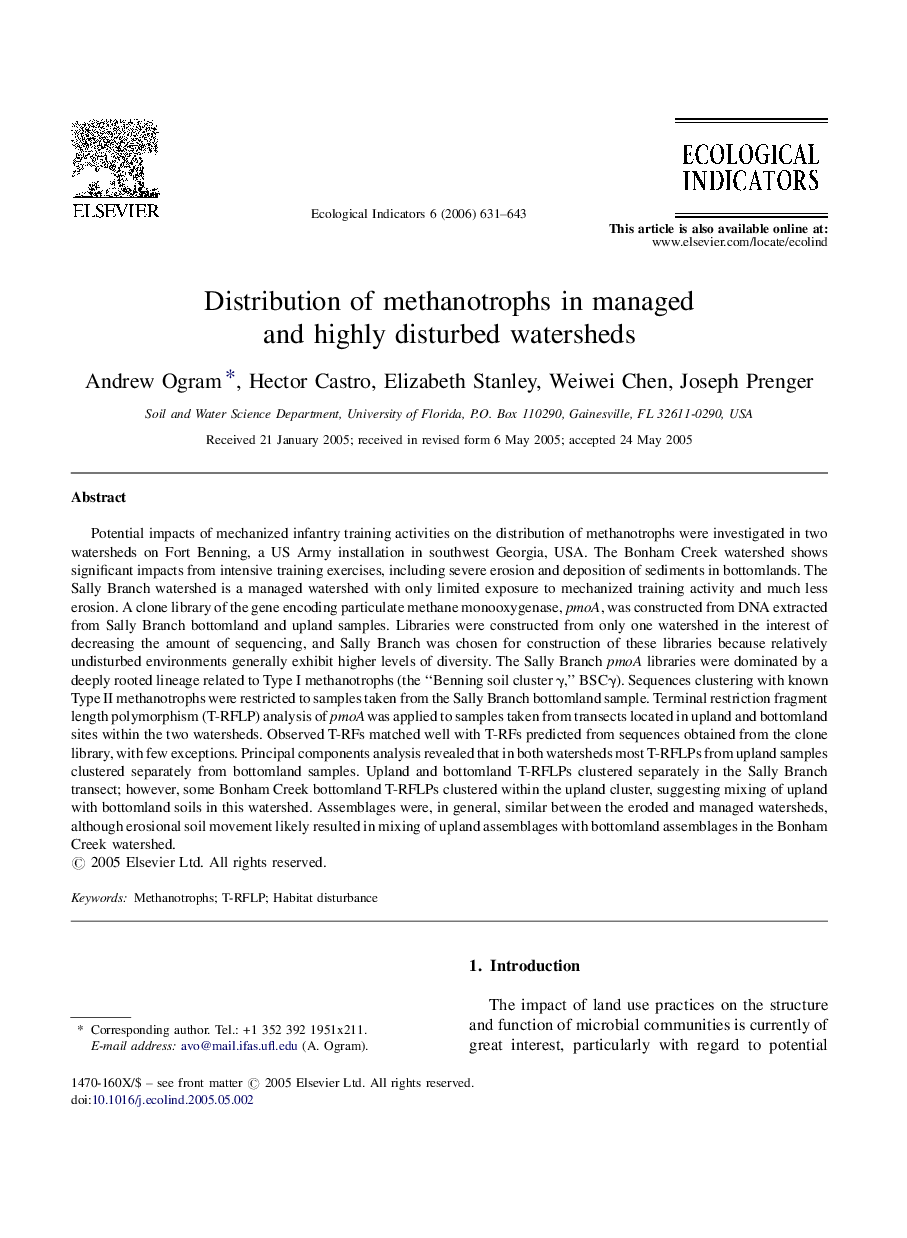| Article ID | Journal | Published Year | Pages | File Type |
|---|---|---|---|---|
| 4374710 | Ecological Indicators | 2006 | 13 Pages |
Potential impacts of mechanized infantry training activities on the distribution of methanotrophs were investigated in two watersheds on Fort Benning, a US Army installation in southwest Georgia, USA. The Bonham Creek watershed shows significant impacts from intensive training exercises, including severe erosion and deposition of sediments in bottomlands. The Sally Branch watershed is a managed watershed with only limited exposure to mechanized training activity and much less erosion. A clone library of the gene encoding particulate methane monooxygenase, pmoA, was constructed from DNA extracted from Sally Branch bottomland and upland samples. Libraries were constructed from only one watershed in the interest of decreasing the amount of sequencing, and Sally Branch was chosen for construction of these libraries because relatively undisturbed environments generally exhibit higher levels of diversity. The Sally Branch pmoA libraries were dominated by a deeply rooted lineage related to Type I methanotrophs (the “Benning soil cluster γ,” BSCγ). Sequences clustering with known Type II methanotrophs were restricted to samples taken from the Sally Branch bottomland sample. Terminal restriction fragment length polymorphism (T-RFLP) analysis of pmoA was applied to samples taken from transects located in upland and bottomland sites within the two watersheds. Observed T-RFs matched well with T-RFs predicted from sequences obtained from the clone library, with few exceptions. Principal components analysis revealed that in both watersheds most T-RFLPs from upland samples clustered separately from bottomland samples. Upland and bottomland T-RFLPs clustered separately in the Sally Branch transect; however, some Bonham Creek bottomland T-RFLPs clustered within the upland cluster, suggesting mixing of upland with bottomland soils in this watershed. Assemblages were, in general, similar between the eroded and managed watersheds, although erosional soil movement likely resulted in mixing of upland assemblages with bottomland assemblages in the Bonham Creek watershed.
